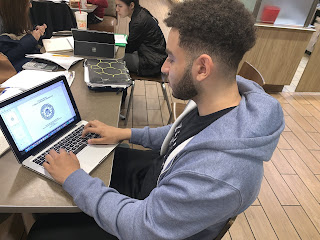Mohamed Hammam, Verrazano Class of 2019, earned a Bachelor of Science in Psychology, and is starting at Doctoral Program in Physical Therapy program at CSI in Fall 2019.
As a psychology major, my four years spent at the College of Staten Island consisted of gaining a better understanding of human behavior along with how to explain, predict, and control such behavioral mental processes. After learning so much about the human mind and the different aspects that shape the actions we perform, I began to try to obtain a deeper insight on the occurrence of school shootings. It is something that is constantly discussed about on all different types of platforms—news outlets, social media, and more. I have noticed that while we are trying to raise awareness regarding school shootings, not much has been done when actually trying to understand why they occur. Such an act should not only be acknowledged, but also understood so that better preventive actions can be taken to lower the occurrence of school shootings. This is what led me to conduct my research on this topic. I have been involved with this capstone project for over the span of two semesters under the guidance of Dr. Peter Costa.
 |
| Mohamed doing work on his capstone |
My capstone project focuses on occurrences of school shootings in contexts such as the motives lying behind why they occur, the typical profiles of school shooters, and the underlying dynamics from biological, cognitive, and social perspectives. In addition, preventive measures are examined that can be used by teachers, healthcare professionals, and law enforcement personnel to prevent future school shootings from occurring. This research allowed me to learn about how and why school shootings occur, which is important because the literature investigated can allow not only healthcare professionals to further recognize these factors, but students, teachers, and family also.
Doing my research with Dr. Costa has allowed me to understand psychology from different perspectives and areas in psychology. Not only have I obtained greater skills in regard to analyzing research, but I also further expanded my knowledge on a topic that I knew very little about. Although I was able to apply previously learned material from my psychology courses to my research, I can now fully incorporate this new information acquired and create a better, overall depiction on the psychological factors involved in the perpetrator’s actions. Seeing my work from before conducting my research to now shows me how much I’ve grown as a college student with Dr. Costa. My decision to conduct research regarding a subject of matter I was interested in contributed to my current knowledge on the topic.
This capstone project is just the beginning of future research I will be conducting, which is why it is of such importance to me. Now that I will be participating in the Undergraduate Research Conference, I can become better at presenting material to others who may not be as familiar in the topic as I am. This is a great opportunity for me to continue spreading awareness of school shootings along with how and why they occur so that people can detect early warning signs and also be more knowledgeable in the topic.



